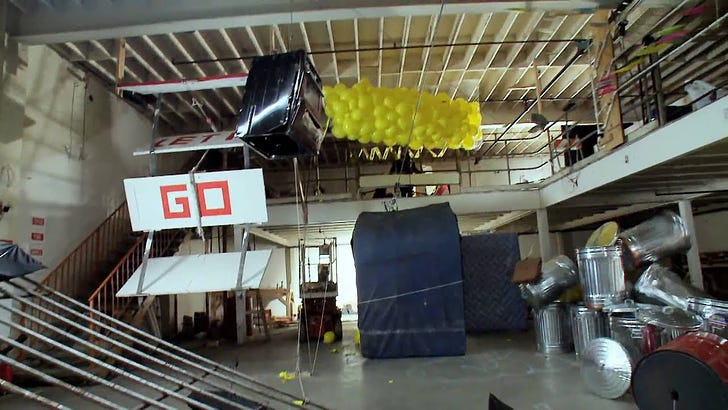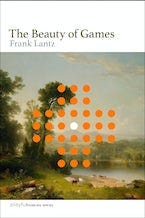Every once in a while, I hear an idea that resonates with me so deeply that it feels like I’ve always known it. It presents such a clear view of otherwise disorganized knowledge that in hindsight it seems obvious.
I felt that way when I read Gödel, Escher, Bach, which laid bare that while rules and proofs are incredibly powerful, there are things we just can’t know. I felt that way when I read Guns, Germs, and Steel, which put history into a broad framework about the scope of humanity and the roulette wheel of civilization. I even felt that way when I read The Iliad. It sounds ridiculous (again, in hindsight), but the humanity, passion, and modernity of this epic poem opened my eyes more than anything to the consistency of the human condition, and that despite all of our technological advances we are still fundamentally the same creatures.
I just had that feeling again, reading Frank Lantz’s new book The Beauty of Games.
A few disclaimers before I go any further. I know Frank - until recently he was the head of the NYU Game Center where I teach, and we’ve shared a few meals. Also, this book was published as part of MIT’s Playful Thinking series, which includes my own Achievement Relocked.
Aesthetics
Fundamentally the book tackles the question “Are games art?”. But wisely it avoids the term ‘art’ which has been loaded up with so much baggage over the years. Instead, Lantz uses ‘aesthetics’, which has a much more neutral connotation. Aesthetics are a description - something ‘has’ aesthetics. Art is innate - something ‘is’ art. Subtle, but the distinction allows us a bit of distance to better understand.
Aesthetics are defined as appreciating something not for its utility, but purely for some non-functional aspect. As humans we enjoy and seek out aesthetics. From cave paintings to ancient beads to patterned mosaics, we see humans layering aesthetics on top of everything they use on a daily basis going back to the earliest settlements we have uncovered.
The most common and accepted aesthetic experiences are visual art, dance, music, and stories. Each of these relate to a core way that humans interact with the world.
We constantly are looking at our surroundings, mostly for a purpose - to navigate, avoid obstacles and dangers, to find food, and spot people we know. The visual arts - paintings, sculptures, and the like - demand that we look simply for the sake of looking. There is no specific utility in looking at a painting. But there is something that our mind engages with to perform the act of looking purely for its own sake.
Art is the aesthetic of vision.
Music, similarly, is the aesthetic expression of listening. We constantly listen for practical purposes. But music is listening for the sake of listening.
Dance is the aesthetic expression of movement, another thing we do every day.
Stories, whether they come in the form of books, movies, plays, poems, or oral recitations, are the aesthetic expression of language. We use language mostly with some goal in mind. Storytelling and poetry allows us to hear a story for the sake of the story, reveling in the language.
This is a simplification of course. All of these aesthetic forms can and do express meaning. But I think you understand the point. These expressions are distilled down to a level that allows us to meditate using these senses.
So where does that leave games? Are games also an aesthetic expression of human existence?
Yes! Games are the aesthetic form of thinking and doing and systems.
Here is a quote from philosopher C. Thi Nguyen, which eloquently states this idea:
Fiction is the crystallization of telling people about what happened; visual arts are the crystallization of looking around and seeing; music is the crystallization of listening. Games, I claim, are the crystallization of practicality. Aesthetic experiences of action are natural and occur outside of games all the time. Fixing a broken car engine, figuring out a math proof, managing a corporation, even getting into a bar fight—each can have its own particular interest and beauty. These include the satisfaction of finding an elegant solution to an administrative problem, of dodging perfectly around an unexpected obstacle. These experiences are wonderful—but in the wild, they are far too rare. Games can concentrate those experiences. When we design games, we can sculpt the shape of the activity to make beautiful action more likely. And games can intensify and refine those aesthetic qualities, just as a painting can intensify and refine the aesthetic qualities we find in the natural sights and sounds of the world.
Games as the Aesthetic Expression of Systems
This idea of games as the aesthetics of thinking and doing and systems crystallized for me (pun intended) much of the pondering I have been doing for years. The Beauty of Games goes deeply into many of these implications.
For one example of how this lens changes things, there are constant debates over defining ‘game’. Realizing that it is any activity that creates or uses a system simply for the sake of experiencing that system is incredibly powerful and expansive. It sidesteps the need for ‘rules’ or ‘goals’. The core is the system.
And it gets at something fundamental. There are things that really feel like they are games, but which few definitions include. But they do fall under this ‘aesthetic system’ definition.
For example, watch this OK Go Rube Goldberg machine:
Or massive domino setups:
These are systems at play. They are the aesthetics of systems. They are games.
We often describe the ‘aesthetics’ of a tabletop game as the visual elements. We need to stop doing that. The aesthetics of a game are in its system, in the clockwork machinery or chaos engine that brings it to life. We engage with this aesthetic by poking it around the edges and seeing what happens.
Character Redux
A few months ago I wrote a GameTek post about why board games have been relatively unsuccessful about creating franchise characters like Mickey Mouse or Mario.
As I was thinking about the core message of The Beauty of Games, I realized that it neatly explained this lack.
If you go back to our taxonomy of aesthetics, you will see that characters are part of the aesthetic of language, of storytelling. Characters are not part of systems.
If you think about it, you wouldn’t ask why paintings or music or dance have created so few ‘franchise’ characters in their thousands of years of history. It is not their realm.
Yes, of course there are exceptions (Mona Lisa, for example). But they are actually quite rare given the scope of music and visual arts.
This also points to a difference in the aesthetic potential of games.
The Aesthetics of Board Games
While our ‘taxonomy of aesthetics’ neatly divides the world into different categories, there is of course, tremendous overlap. The album “Tommy” is both music and story. Ballet encompasses music, story, and movement, and the staging imparts a strong visual element as well.
Video Games can tap into most of these aesthetics. While their core aesthetic experience lies in systems, they also have easy access to music, visual arts, storytelling, and even dance if you consider games such as Dance, Dance, Revolution. In a sense, video games can be the pinnacle of aesthetic expression, weaving in all different sources.
But I posit that board games are the purest expression of the aesthetic of systems and thinking and planning. Yes, there are visual art components to presentation. And sometimes attempts as stories.
But the games that have lasted thousands of years - chess, backgammon, dice, playing cards - these are first and foremost capital-S Systems, in their purest form.
Often, given the sales disparity, I think we sometimes think that tabletop games have been relegated to second class citizens. The Beauty of Games made me realize both that our circle of games needs to expand to include the many systems people create and interact with just for the sake of the system, as well as that within those systems, board games are the purest distillation of all the wondrous forms of this aesthetic experience.
The Beauty of Games
I am only scratching the surface of The Beauty of Games. Lantz does an excellent job examining the role and meaning of aesthetics in our lives, and teasing out all the implications of games being the embodiment of systems. I hope the book resonates with you as much as it does with me.





Geoff, thanks so much for the wonderful write-up. Also really appreciate the thoughtful comments from your readers!
I have to disagree about some of your thesis. There are things onto which we place aesthetics that technically don't need them -- think light switches, for instance -- but which we want to make more pleasurable for ourselves to interact with. Then there are things that make us think. Visual arts and literature, in particular. They are about ideas. So a game might be about the system, but it might also be about an idea, or an experience that makes you think. Not necessarily but if it has a story, what is the story's purpose -- to engage us purely on an aesthetic level or to convey a message? I think the short answer is that beauty is something different than aesthetics is something different than art. In any event it's all personal. Otherwise, a light switch is just a light switch is just a light switch. Anyway, what were we talking about?